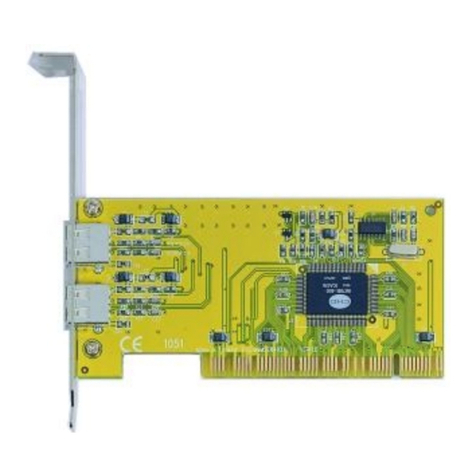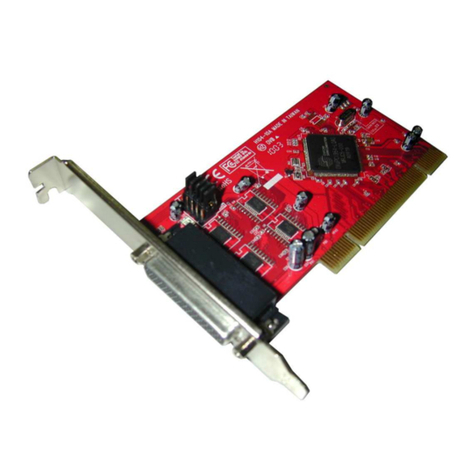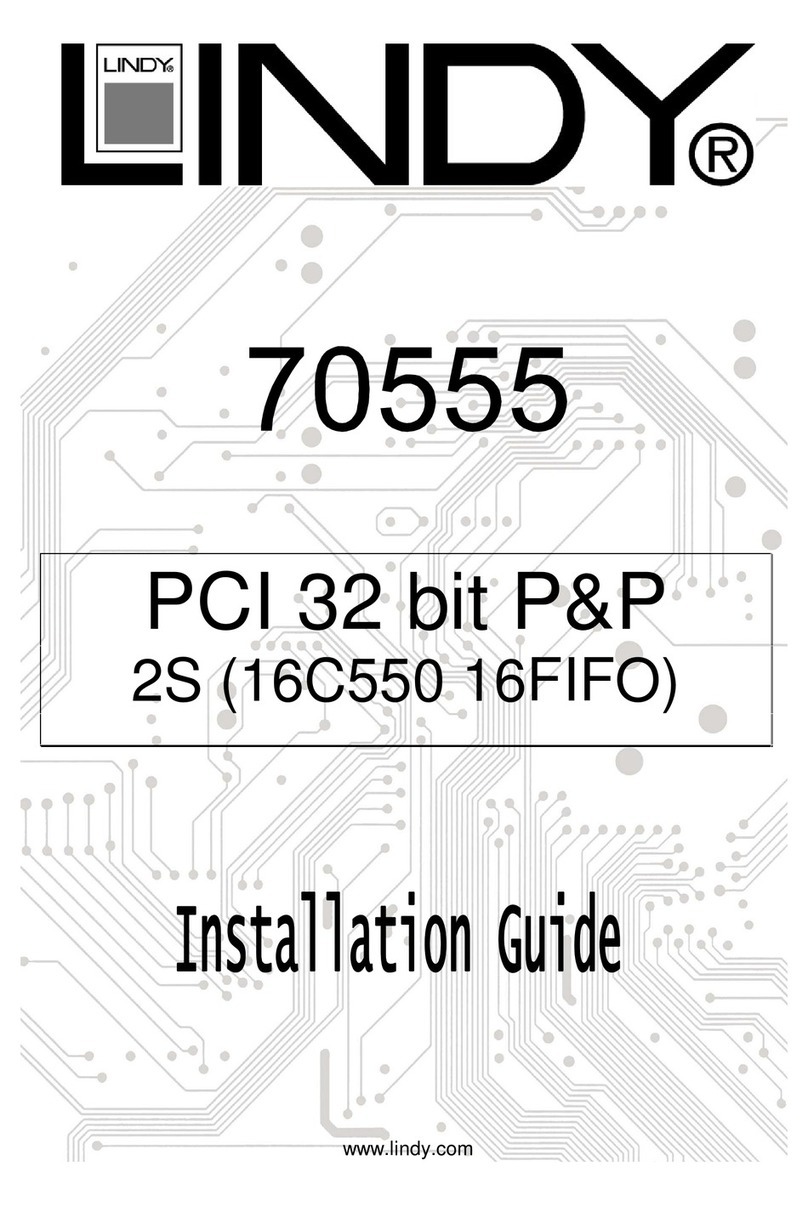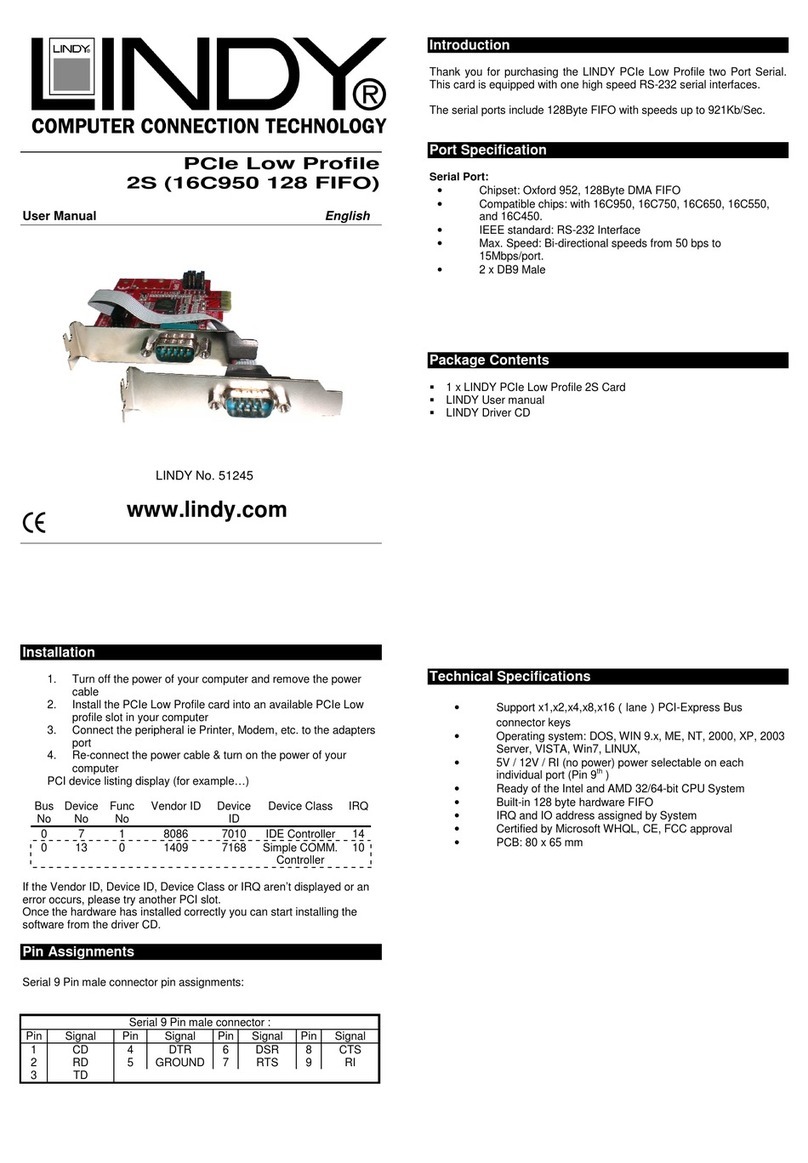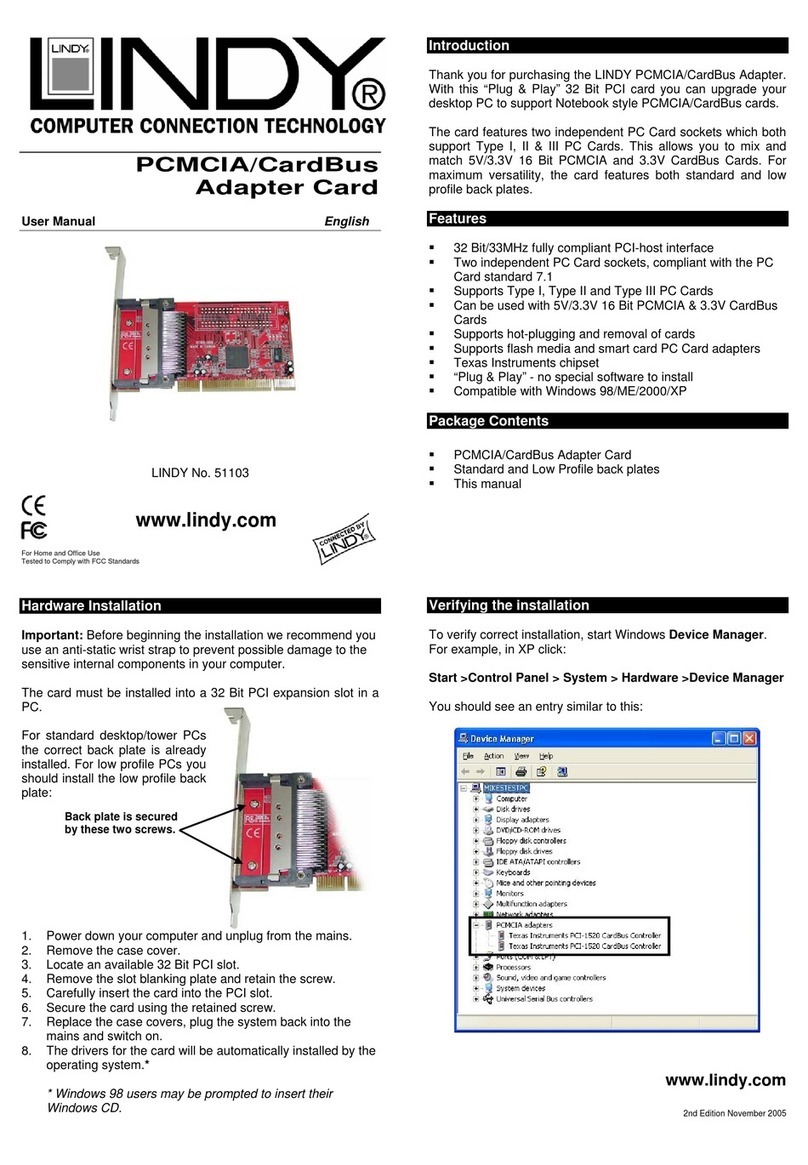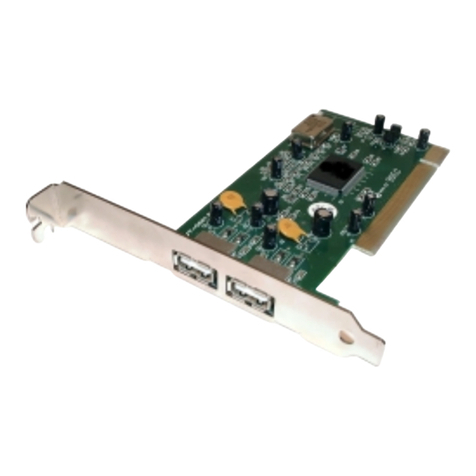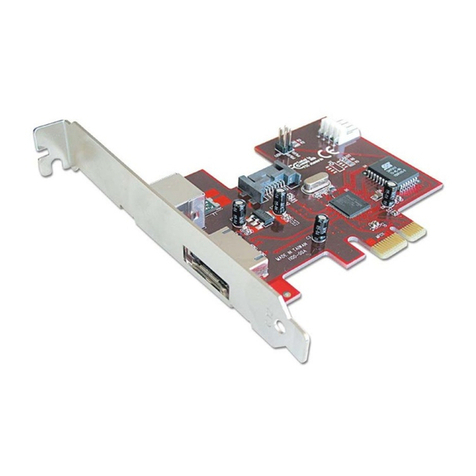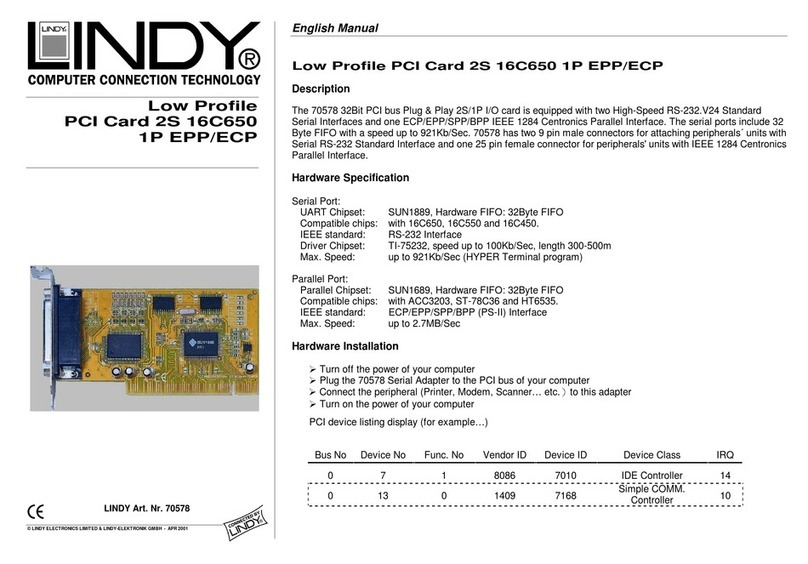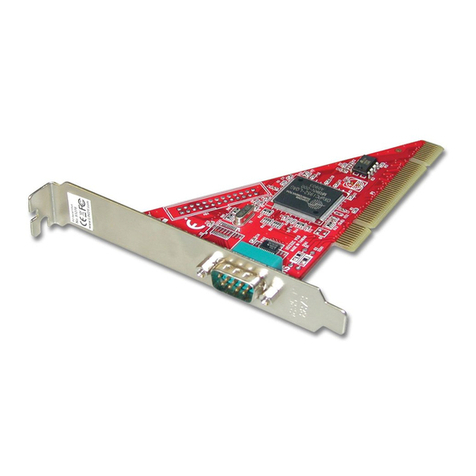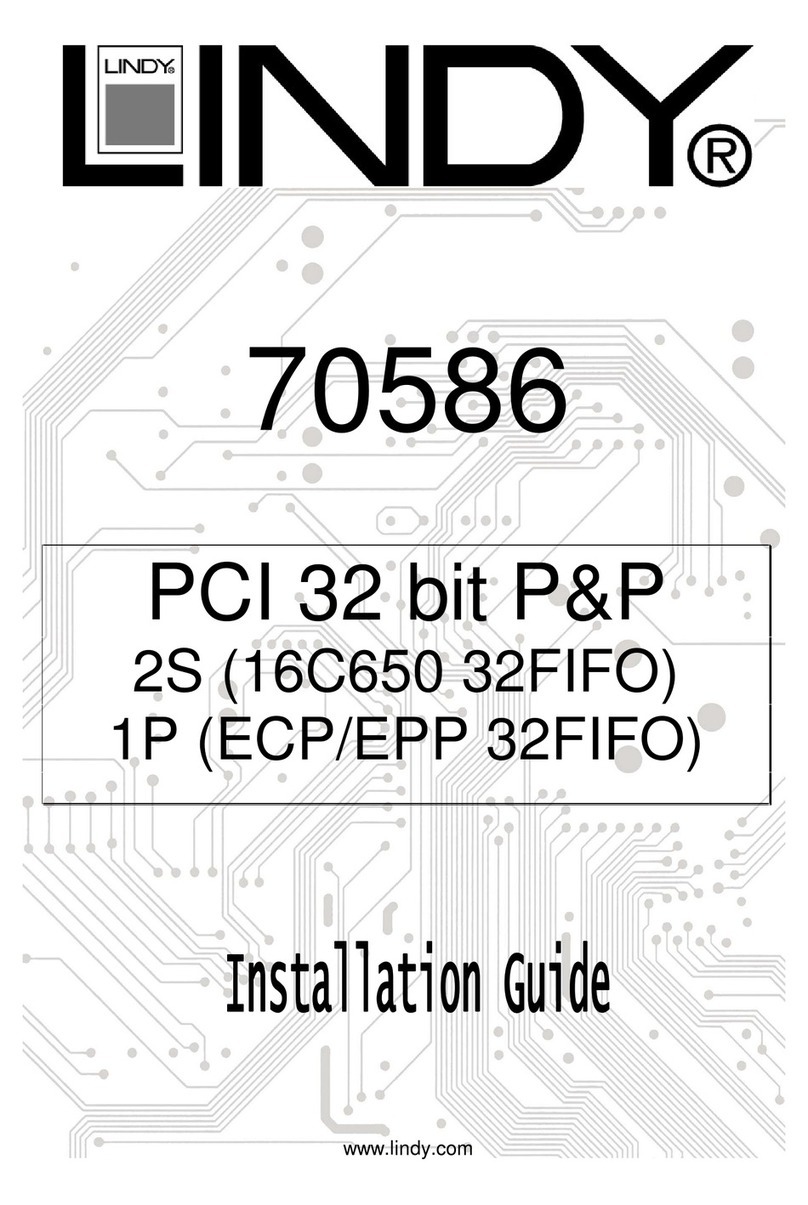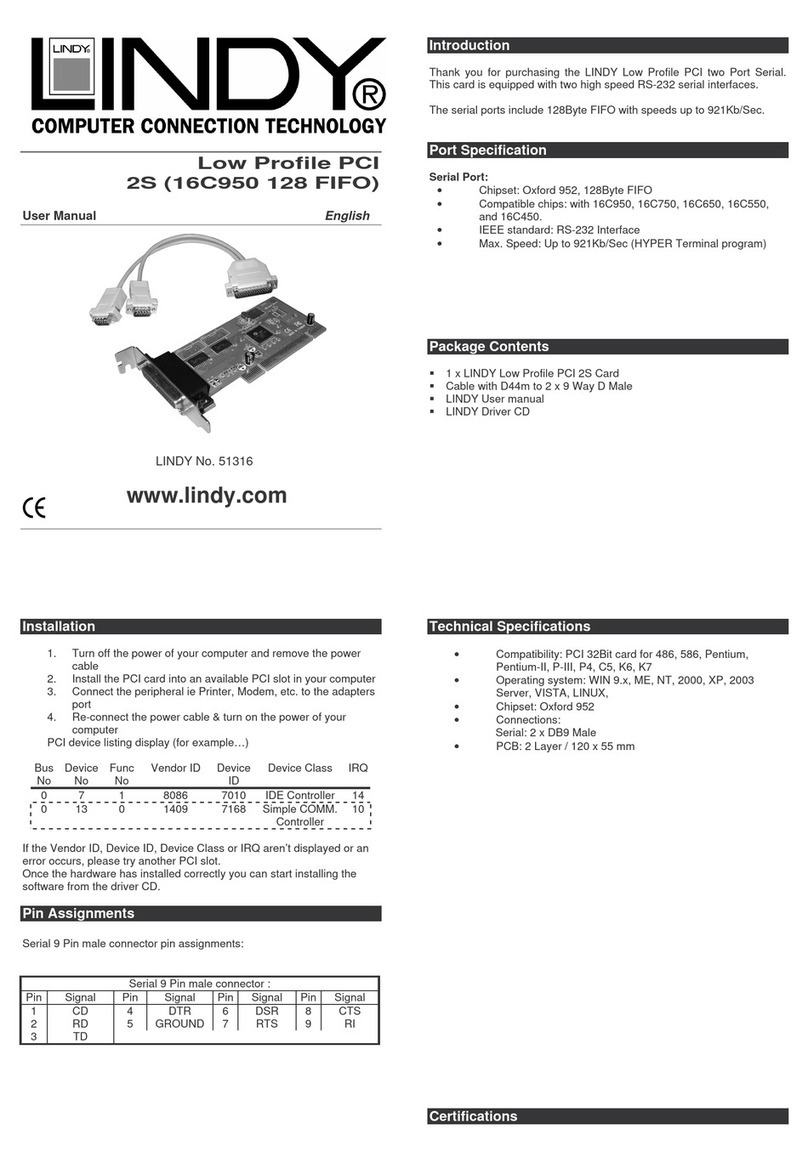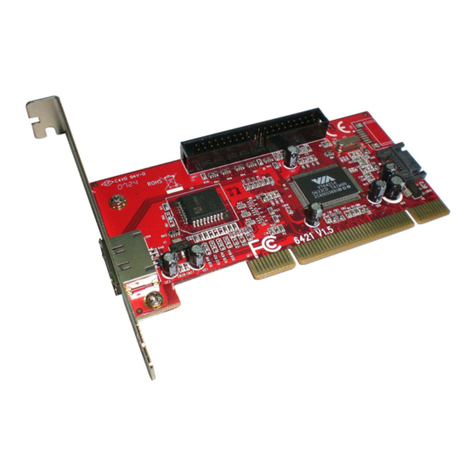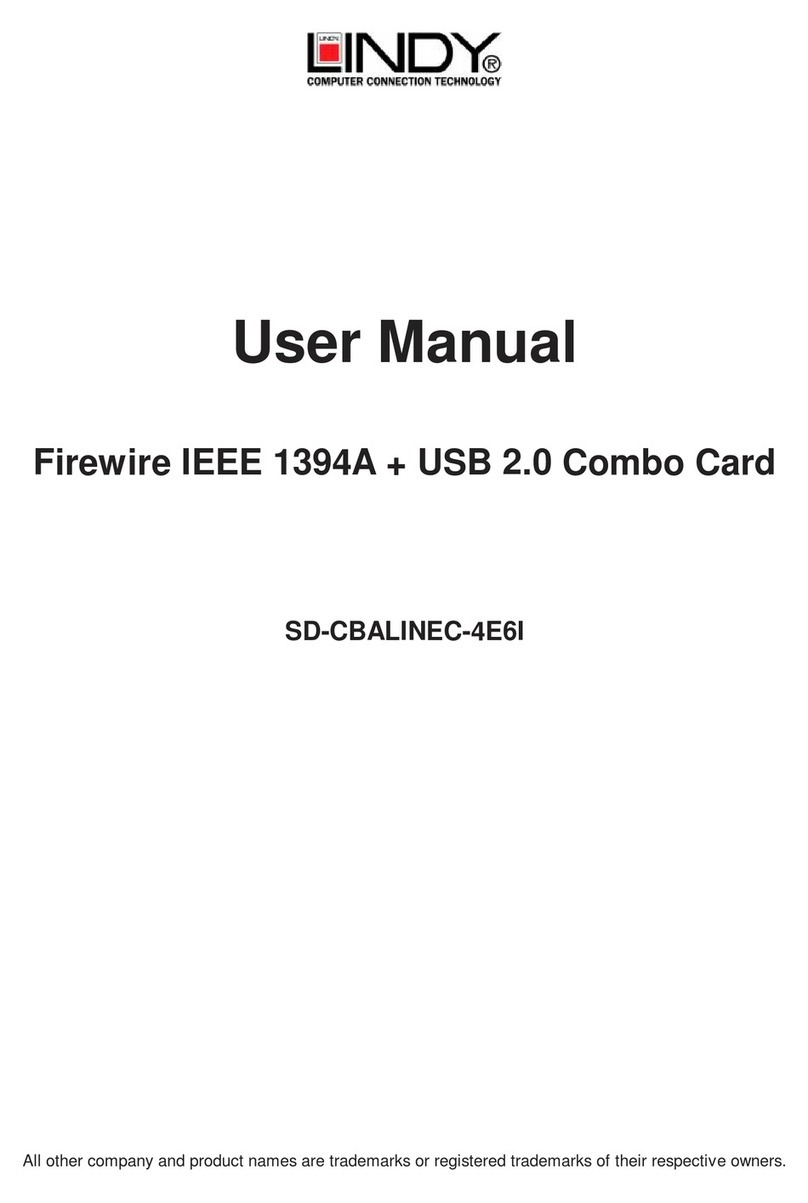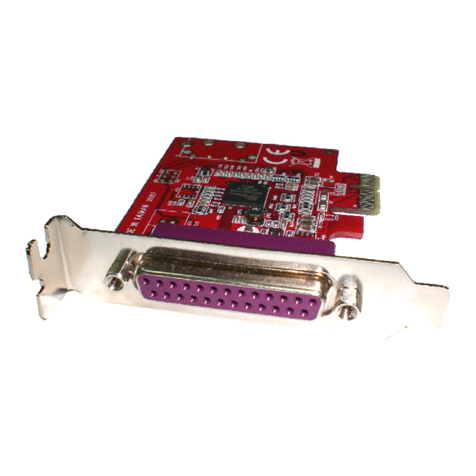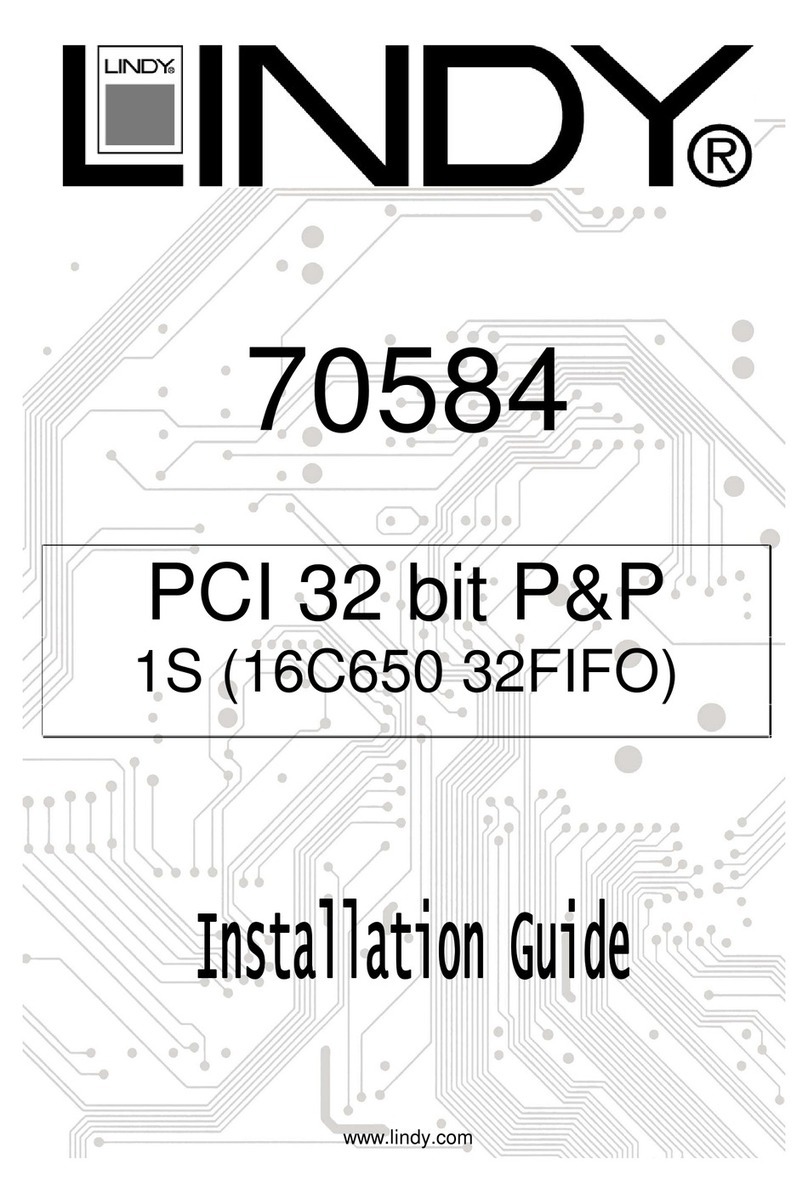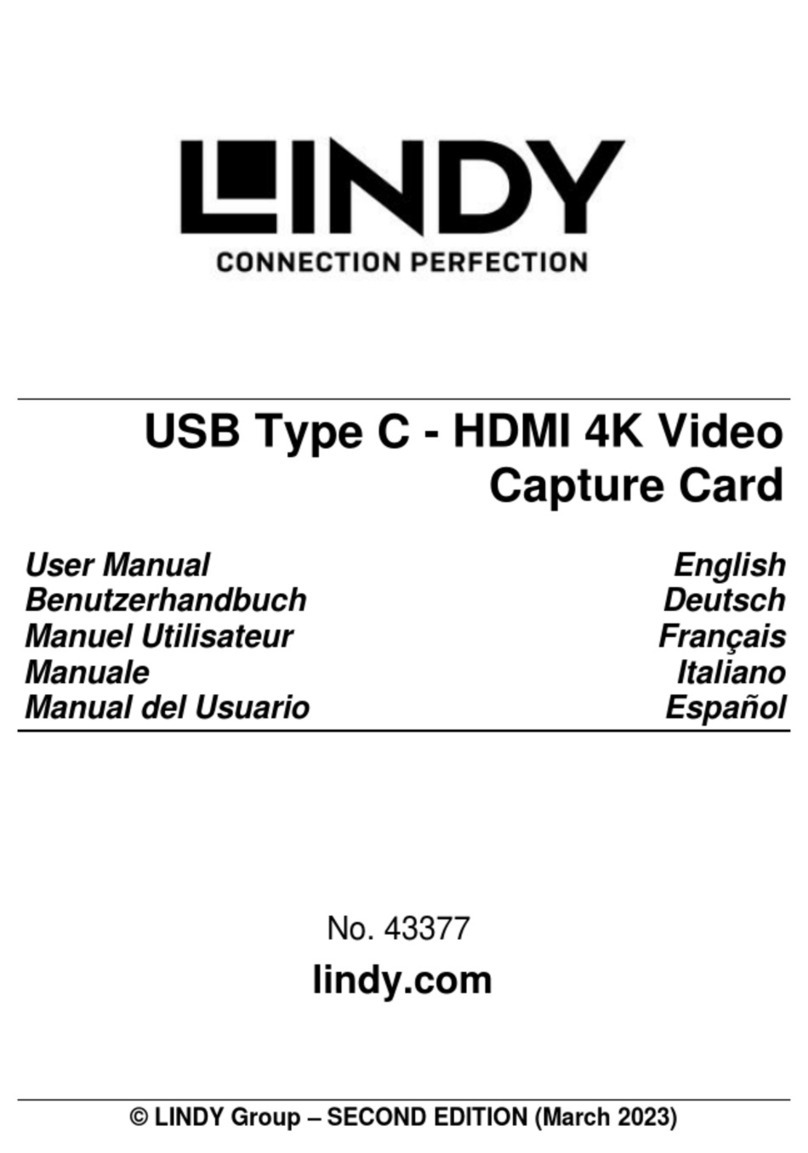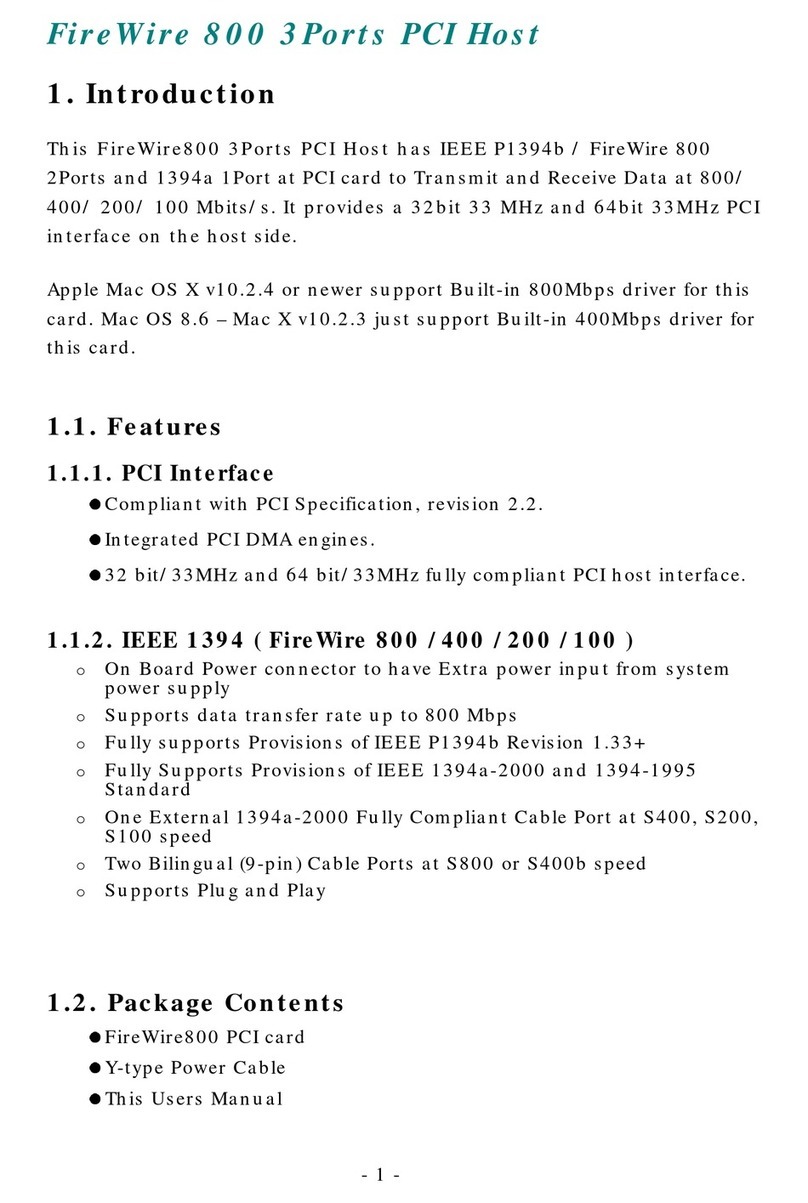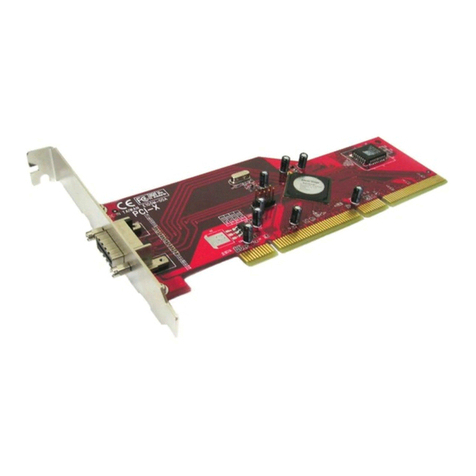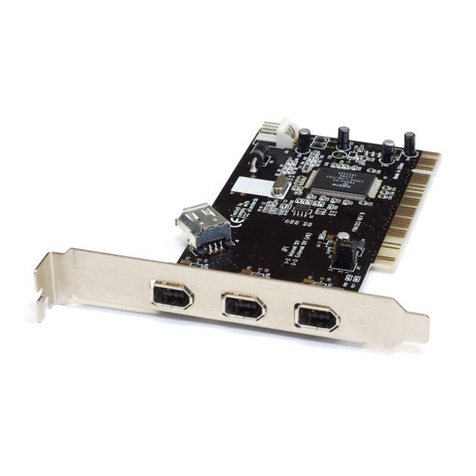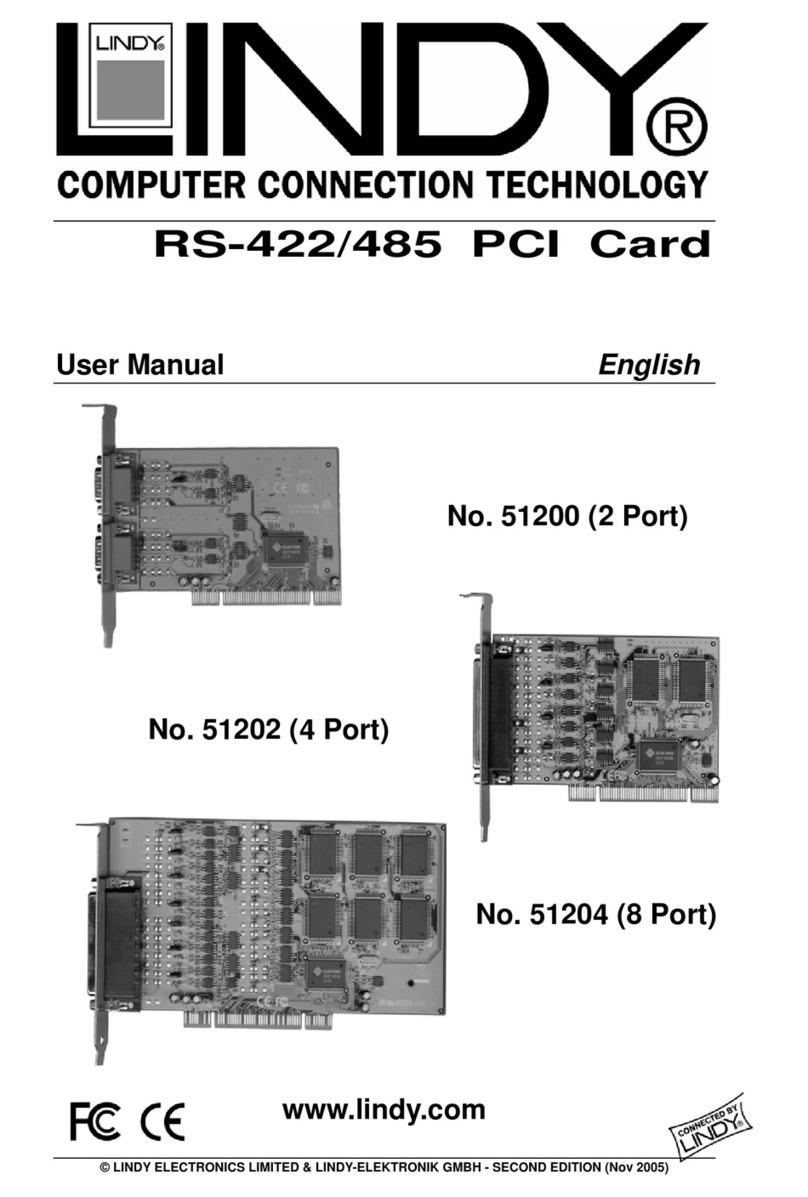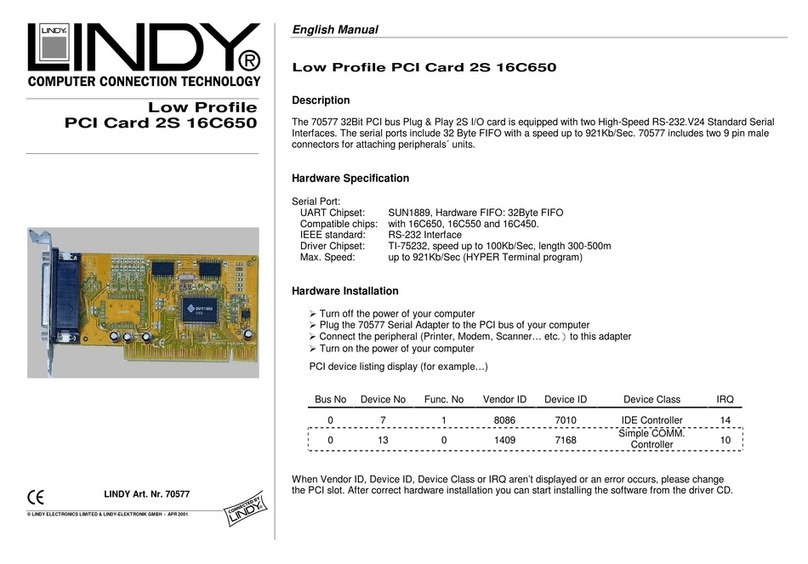
6. Restart the computer again to complete the installation.
To verify successful installation in Windows server 2003:
1. From the main desktop, click on“ My Computer”, then double-click on “Control Panel,
System”, and“Device Manager”.
2. Double-click on “SCSI & RAID”, you should find “JMicron JMB36X
RAID Controller” or “JMicron JMB36X RAID Processor”. The
RAID card is now ready to use.
CE Statement
This device complies with the European Regulations for Electromagnetic
Compatibility (EMC) of the European Union and it is equipped with the CE mark.
This unit has to be used with high quality shielded connection cables. Only if such
high quality shielded cables are used can you be sure that the EMC compatibility
is not adversely influenced.
FCC Statement
Shielded cables must be used with this equipment to maintain compliance with
radio frequency energy emission regulations and ensure a suitably high level of
immunity to electromagnetic disturbances.
FCC Warning
This equipment has been tested and found to comply with the limits for a Class B
Digital device, pursuant to part 15 of the FCC Rules. These limits are designed
to provide reasonable protection against harmful interference in a residential
installation. This equipment generates, uses, and can radiate radio frequency
energy and, if not installed and used in accordance with the instructions, may
cause harmful interference to radio communications. However, there is no
guarantee that interference will not occur in a particular installation. If this
equipment does cause harmful interference to radio or television reception, which
can be determined by turning the equipment off and on, the user is encouraged to
try to correct the interference by one or more of the following measures:
Reorient or relocate the receiving antenna
Increase the separation between the equipment and receiver
Connect the equipment into an outlet on a circuit different from that to which
the receiver is connected
Consult the dealer or an experienced technician for help
You are cautioned that changes or modifications not expressly approved by the
party responsible for compliance could void your authority to operate the
equipment.
WEEE (Waste of Electrical and Electronic Equipment),
Recycling of Electronic Products
United Kingdom
In 2006 the European Union introduced regulations (WEEE) for the collection and
recycling of all waste electrical and electronic equipment. It is no longer allowable
to simply throw away electrical and electronic equipment. Instead, these products
must enter the recycling process.
Each individual EU member state has implemented the WEEE regulations into
national law in slightly different ways. Please follow your national law when you
want to dispose of any electrical or electronic products.
More details can be obtained from your national WEEE recycling agency.
Germany / Deutschland
Die Europäische Union hat mit der WEEE Direktive umfassende Regelungen für
die Verschrottung und das Recycling von Elektro- und Elektronikprodukten
geschaffen. Diese wurden von der Bundesregierung im Elektro- und
Elektronikgerätegesetz – ElektroG in deutsches Recht umgesetzt.
Dieses Gesetz verbietet vom 24.März 2006 an das Entsorgen von
entsprechenden, auch alten, Elektro- und Elektronikgeräten über die
Hausmülltonne! Diese Geräte müssen den lokalen Sammelsystemen bzw.
örtlichen Sammelstellen zugeführt werden! Dort werden sie kostenlos entgegen
genommen. Die Kosten für den weiteren Recyclingprozess übernimmt die
Gesamtheit der Gerätehersteller.
France
En 2006, l'union Européenne a introduit la nouvelle réglementation (WEEE)
pour le recyclage de tout équipement électrique et électronique.
Chaque Etat membre de l’ Union Européenne a mis en application la nouvelle
réglementation WEEE de manières légèrement différentes. Veuillez suivre le
décret d’application correspondant à l’élimination des déchets électriques ou
électroniques de votre pays.
Italy
Nel 2006 l’unione europea ha introdotto regolamentazioni (WEEE) per la raccolta
e il riciclo di apparecchi elettrici ed elettronici. Non è più consentito
semplicemente gettare queste apparecchiature, devono essere riciclate.
Ogni stato membro dell’ EU ha tramutato le direttive WEEE in leggi statali in varie
misure. Fare riferimento alle leggi del proprio Stato quando si dispone di un
apparecchio elettrico o elettronico.
Per ulteriori dettagli fare riferimento alla direttiva WEEE sul riciclaggio del proprio
Stato.
No. 51125
www.lindy.com
